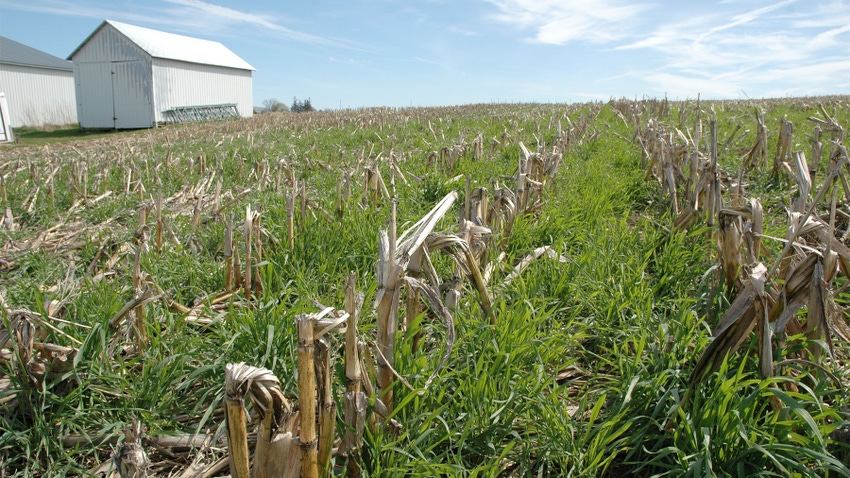
Soil conservation leaders set a goal of 50 million acres of cover crops across the U.S. Considering acreage reported in the 2022 Ag Census is 18 million, that is a lofty goal. Can agriculture get there?
“We must reach that goal,” says Dan Perkins, a farmer and cover crop adviser. He and his wife operate Perkins’ Good Earth Farm near De Motte, Ind.
“There is enough interest and awareness among the public today that we must do these things,” Perkins says. “The biggest difficulty for some is making a change of heart. With lower crop prices now, there is no alternative. Farmers must do the difficult thing.”
Where cover crops stand today
Rob Myers, director of the Center for Regenerative Agriculture at the University of Missouri, updated participants at the Midwest Cover Crops Council’s annual conference about the current state of cover crops nationally. Cover crop acreage totaled 10 million acres based on the 2012 Ag Census, the first time cover crop data was included. It reached 15 million in the 2017 census.
In the latest census, Iowa reported the most cover crop acres, followed by Indiana. Fastest growth occurred in North Dakota.
The 2022 census showed 926,118 acres of cover crops in Indiana, up only 5% from the previous census. “The census data is a set of numbers,” Myers says. “How questions are phrased can make a difference. It’s not perfect, but it is something to compare to over time.”
To that point, Indiana conservation partners conduct a comprehensive transect of cover crop and no-till acreage each year. The most recent transect indicated 1.5 million acres of winter cover, including about 300,000 acres of winter wheat. That is considerably higher than the census estimate.
Breaking down the Ag Census data further, nearly every county in the U.S. reported some cover crop acres. The number of farmers growing cover crops, about 153,000, was similar to the previous census. This time, the number of acres per farmer increased.
Increases were biggest among larger farm operations. The largest farms, with 2,000 or more acres, showed a 53% increase in cover crop acreage; farms with 1,000 to 2,000 acres increased cover crop acreage by 38%. The increase for farms with 500 to 999 acres was 18%.
Future growth
Myers is optimistic that cover crop acreage will continue to grow, although it may take a while to reach 50 million acres. He believes it’s possible to add 10 million acres to the 18 million existing cover crop acres over the next five to six years. Here are reasons why:
Changing attitudes. Younger people taking a more active role in farm decision-making are better educated about the benefits of cover crops.
Improved varieties. Better breeding in species and varieties of cover crops is underway. For example, a soft-seeded hairy vetch variety under development could spur adoption of that nitrogen-producing cover crop. Improved cereal rye varieties with more allelopathic effect on weeds are also under development.
New technology. New equipment for seeding cover crops, including new drone models, are coming onto the market.
More funding. A sharp increase in federal government funding available to support growers trying cover crops should continue over the next few years. Extra funding comes from the Inflation Reduction Act.
About the Author(s)
You May Also Like




